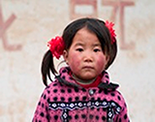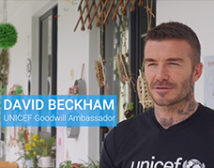Girls and boys must be protected from all forms of violence and abuse. Families, communities and authorities are responsible for ensuring this protection.
Violence against children can happen in many settings: in the family and home, in schools, in care and justice facilities, in workplaces and in the community; and it takes many forms:
-
physical violence (spanking or beating under the guise of discipline, violent shaking, fighting, child-on-child violence, corporal punishment)
-
psychological violence (insults, humiliation, bullying, emotional abuse, harassment)
-
sexual violence and abuse (sexual comments, exposure to or involvement in pornography, forcing children to watch sexual acts, genital touching, any form of sexual intercourse with adults who have authority over children)
-
neglect and abandonment (isolation, not providing necessary food or medical treatment, emotional distance, locking children up inside the home, leaving children unattended in a parked car, not talking to the child, not showing any care and support for the child)
-
child marriage (arranging, forcing or allowing a child marriage before the legal age)
Important things to know about violence against children:
Quite often, children who experience violence often do not talk about the problem because of fear, shame or stigma. Some children come to accept violence as a "normal" part of life.
It is very important to understand that all children of any age, gender, ethnicity or nationality must be protected from all forms of violence.
While some violence is perpetrated by strangers, most is carried out by people whom children know and should be able to trust for protection; including parents, relatives, siblings, caregivers, friends, schoolmates, teachers, religious leaders and employers.
Violence against children is a serious crime in China.
Certain groups are particularly vulnerable to violence, such as children: with disabilities, without care providers, of minority groups, living or working on the street, in conflict with the law, and who are refugees, displaced or affected by migration.
Babies and young children are sometimes the object of a parent's frustration when they do not stop crying. The caregiver may shake the young child so hard that it causes serious harm that can lead to permanent injury or death. It is never okay to shake a child.
Often, adults take action after child maltreatment occurs. It is critical that communities shift the emphasis to preventing child violence, abuse, neglect and harmful practices. Violence against children cannot be tolerated and International experience tells us that it is preventable.
Every parent, teacher, caregiver and citizen can play a role in reducing violence against children:
-
Resolve to refrain from any form of spanking or corporal punishment as a means of disciplining a child; there are many very effective non-violent ways to discipline a child.
-
Pay attention to children and listen carefully to the different ways they share information; provide positive encouragement and praise; point out and correct negative behaviours; never vilify or humiliate.
-
Protect young children from all forms of sexual language, images and behaviour.
-
Take an active interest in the health, safety and well-being or all children in the neighborhood and community.
-
Don't expose children to heavy or hazardous physical labour, unsafe conditions.
Every community should create and implement a plan of action to eliminate violence against children. Some key actions may include:
-
Develop and broadly communicate codes of conduct against all forms of violence in settings where children live, go to school, play and work.
-
Educate parents and caregivers to respect the child's perspective, learn how to use positive and non-violent discipline and not to discipline a child when angry.
-
Support schools to foster attitudes that reject violence and promote conflict resolution. This can involve changing classroom management to a child-friendly approach that is inclusive, fair, participatory and cooperative.
-
Sponsor public campaigns to stop corporal punishment, abuse and harmful practices such as child marriage and hazardous forms of labour.
-
Provide children affected by violence with health and psycho-social services to help them reintegrate into their families and communities.
-
Establish safe ways for children to report violence against them, such as telephone hotlines or accessible social protection centres.
Download:
TA_CP_Child Abuse and Exploitation




























